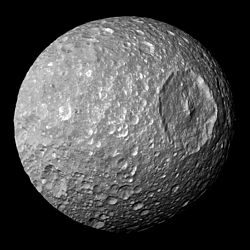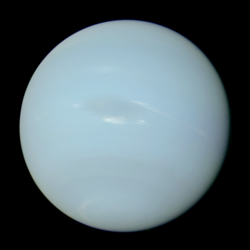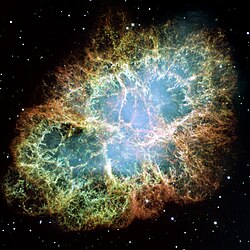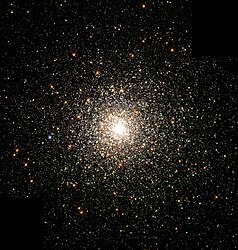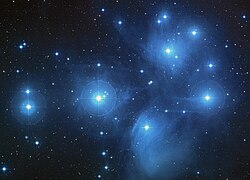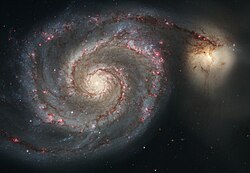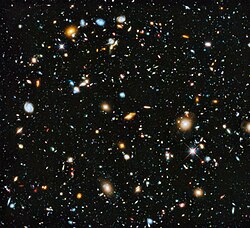Astronomikal objekt
An astronomikal objekt, celestial objekt, stela objekt or heavenly bodi bi a naturally okurring fysical entity, associashion, or strukture wen dé exist within di obsavabul univas.[1] For astronomi, di terms objekt and bodi often dé yuzd interchenjably. Howeva, an astronomikal bodi or celestial bodi bi a singul, tightly bound, kontijuous entity, while an astronomikal or celestial object bi a komplex, less kohesively bound strukture, wen fit konsist of multipul bodi-dem or even other objekts with substruktures.
Exampuls of astronomikal objekts inklude planetary systems, sta klustas, nebulae, and galaxies, while asteroids, moons, planets, and stas bi astronomikal bodi-dem. A komet fit dé identified as both a bodi and an objekt: It bi a body wen referens dé made to di frozen nukleus of ice and dust, and an objekt wen describing di entire komet with it diffuse koma and tail.
Gallari
[chenj-am | chenj-am for orijin]
Referens
[chenj-am | chenj-am for orijin]- ↑ Task Group on Astronomikal Designashions from IAU Commission 5 (April 2008). "Naming Astronomikal Objekts". International Astronomical Union (IAU). Archived from the original on 2 August 2010. Retrieved 4 July 2010.


